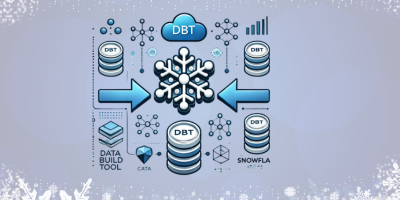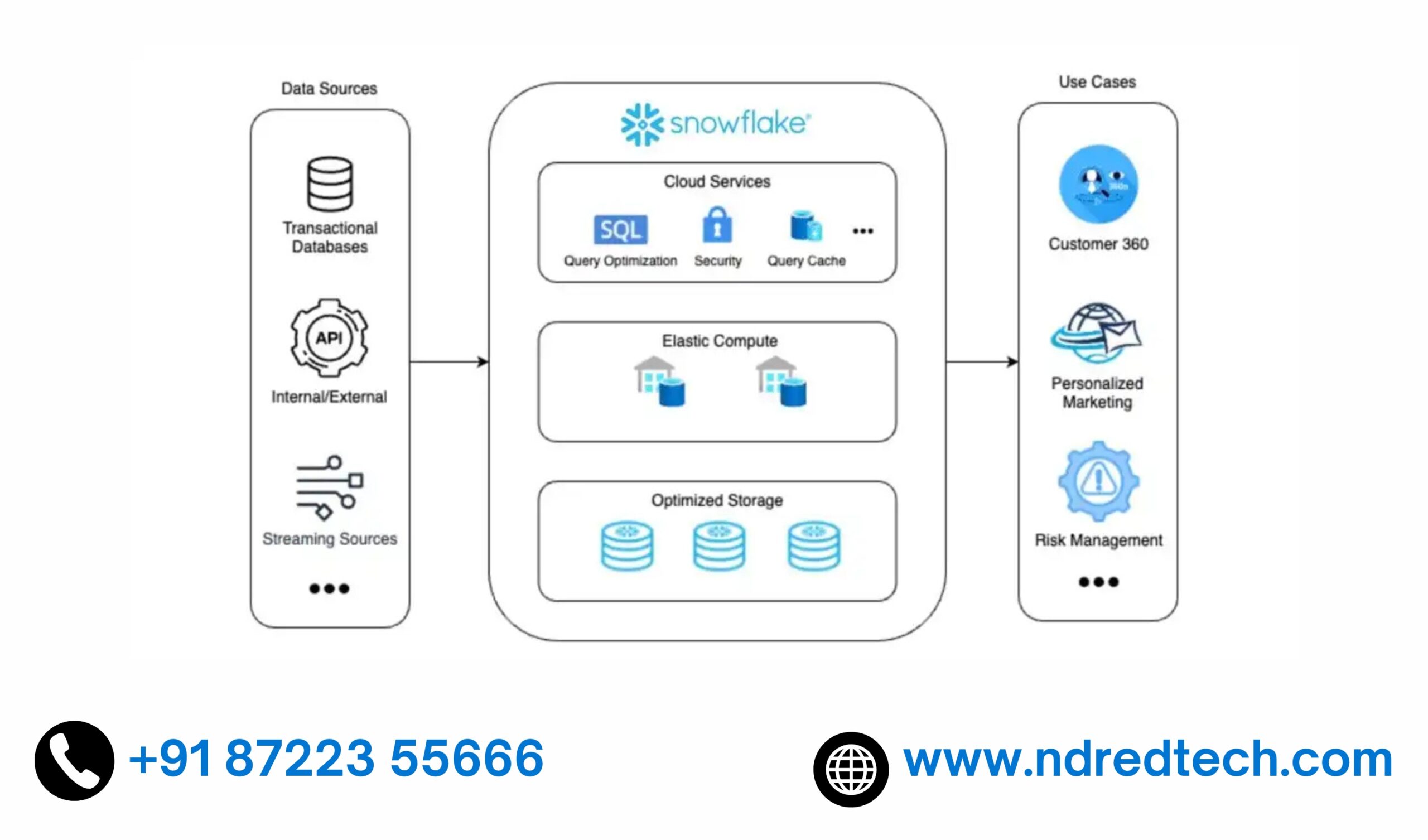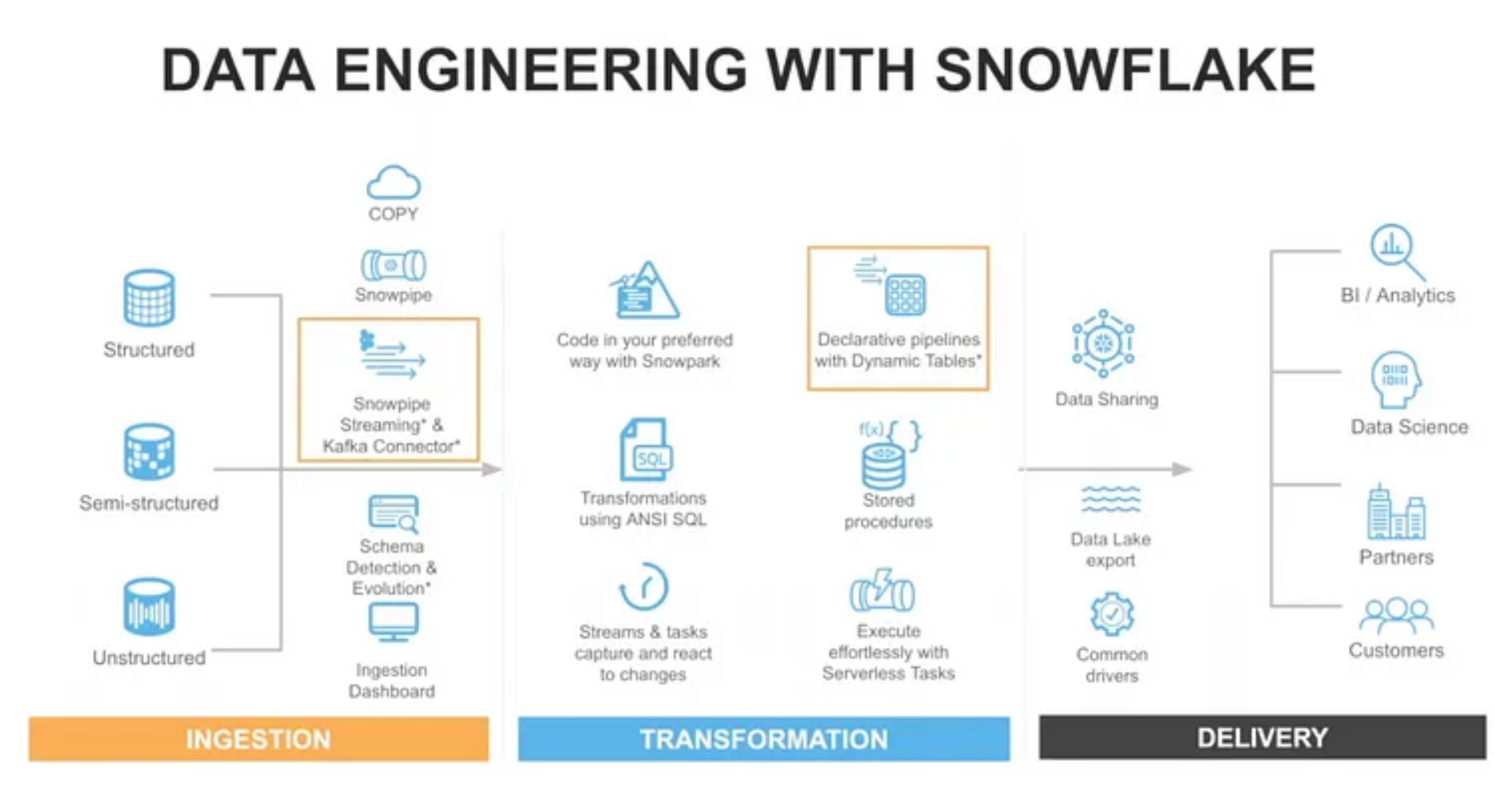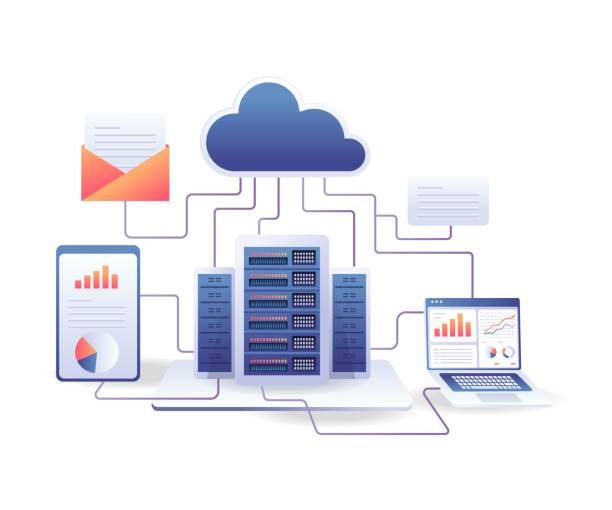In the modern data landscape, organizations rely on efficient tools to transform raw data into meaningful insights. Combining Snowflake, a leading cloud data platform, with dbt (Data Build Tool) provides a robust solution for scalable and automated data transformation. This article explores how you can integrate DBt with Snowflake to streamline your data workflows and enable advanced analytics.
Why combine dbt with Snowflake?
Snowflake is renowned for its ability to handle massive volumes of data with high performance and scalability. However, transforming that data into actionable insights requires a systematic approach. That’s where dbt comes in.
Dbt streamlines data transformation by enabling data analysts and engineers to craft SQL queries for data transformation and construct modular, testable pipelines. Here’s why the combination works so well:
- Scalability: We designed both tools to scale with your data. Snowflake handles storage and compute, while dbt orchestrates transformations.
- Ease of Use: DBT leverages SQL, making it accessible to teams familiar with SQL syntax.
- Automation: DBT automates repetitive tasks such as dependency resolution and documentation generation.
- Cost Efficiency: Snowflake’s pay-per-use pricing model complements dbt’s lightweight nature.
Together, Snowflake and dbt create a robust framework for modern, scalable data transformation.
Getting Started with dbt and Snowflake
To use dbt with Snowflake, follow these steps:
Step 1: Set Up Your Snowflake Account
Before diving into dbt, ensure you have a Snowflake account set up. If you don’t already have one, sign up for a trial account here. Once your account is ready:
- Create a Snowflake warehouse for compute resources.
- Define databases and schemas where your raw data will reside.
- Set up roles and permissions for dbt to access Snowflake securely.
Step 2: Install and Configure dbt
dbt requires Python to run, so ensure Python is installed on your machine. Then, follow these steps:
1. Install dbt using pip:
2. pip install dbt-snowflake
1. Initialize a new dbt project:
4. dbt init your_project_name
1. Navigate to the project directory and configure the profiles.yml file. This file contains Snowflake connection details. An example configuration looks like this:
6. your_profile_name:
7. target: dev
8. outputs:
9. dev:
10. type: snowflake
11. account: your_snowflake_account
12. user: your_snowflake_username
13. password: your_password
14. role: your_snowflake_role
15. database: your_database_name
16. warehouse: your_warehouse_name
17. schema: your_schema_name
Replace placeholders with your Snowflake account details.
Step 3: Create dbt Models
dbt organizes transformations into “models.” A model is essentially a SQL file that defines how data should be transformed. Your database project stores models in the models/ directory.
Here’s an example of a simple dbt model (models/customer_orders.sql):
SELECT
c.customer_id,
c.customer_name,
SUM(o.order_amount) AS total_order_value
FROM
{{ ref('customers') }} c
JOIN
{{ ref('orders') }} o
ON
c.customer_id = o.customer_id
GROUP BY
c.customer_id, c.customer_name
The {{ ref() }} function links this model to other models or raw tables, ensuring dependency management.
Step 4: Run dbt Transformations
Once your models are defined, use dbt commands to transform your data in Snowflake
1. Run all models:
2. dbt run
1. Test your data transformations:
4. dbt test
1. Generate and view documentation:
6. dbt docs generate
7. dbt docs serve
dbt compiles your SQL into Snowflake queries, executes them, and stores the results back in Snowflake.
Best Practices for Using dbt with Snowflake
To get the most out of dbt and Snowflake, follow these best practices:
1. Use Incremental Models
For large datasets, running transformations on the entire dataset can be expensive and time-consuming. Use dbt’s incremental models to process only new or updated data. Here’s an example configuration:
config(
materialized='incremental',
unique_key='id'
)
2. Leverage Snowflake-Specific Features
Snowflake offers unique features like cloning and zero-copy snapshots. Incorporate these into your dbt transformations to save time and storage.
3. Automate dbt Runs with Snowflake Tasks
Use Snowflake’s tasks and streams to trigger dbt runs automatically when new data arrives.
4. Implement Testing and Documentation
dbt provides built-in testing capabilities. Add tests to ensure data quality and integrity:
version: 2
models:
- name: customer_orders
tests:
- unique
- not_null
Additionally, leverage dbt’s documentation features to create a centralized repository of your data lineage and transformation logic.
Benefits of Using dbt with Snowflake
Integrating dbt with Snowflake offers several benefits:
- Improved Productivity: Analysts and engineers can focus on writing SQL without worrying about the operational complexities of data pipelines.
- Data Consistency: dbt ensures dependencies are resolved, leading to consistent and reliable data outputs.
- Collaboration: dbt’s modular design allows teams to collaborate effectively.
- Cost Savings: Snowflake’s performance optimizations combined with dbt’s incremental builds reduce compute costs.
Use Cases of dbt with Snowflake
Here are a few real-world examples of how organizations use dbt with Snowflake:
- E-commerce: Transforming customer and sales data for better segmentation and targeted marketing.
- Finance: Consolidating transactional data for financial reporting and forecasting.
Healthcare: Aggregating patient records for data-driven insights and improved care delivery.






